Abstract
Clinical practice guidelines are increasingly important for improving the quality and the process of healthcare delivery. Unfortunately, most guidelines are available only in a text-based format, which is difficult to integrate into clinical practice. Computers can facilitate guideline integration into clinical practice; however, this migration to computers requires translating text into intermediary representations. One type of representation that is readily adaptable for computerization is a linear algorithm. This paper describes a systematic process to convert text-based clinical practice guidelines into a linear algorithm with structured content, as an intermediate step to electronic implementation. The process includes: 1) defining applicability criteria, 2) identifying entry points, 3) defining decision points, 4) defining actions, 5) creating a linear algorithm that links decision points and actions, and 6) adding supporting resources. This process has been used successfully to prepare more than two dozen guidelines for computerization. It has been tested by several physicians and informaticians and shown to be transferable to various user groups. The availability of a systematic process to convert text-based guidelines into a structured intermediary format for electronic implementation can facilitate the computerization of guidelines and can inform guideline content developers regarding the critical elements that need to be explicitly stated in guidelines to support electronic implementation.
Full text
PDF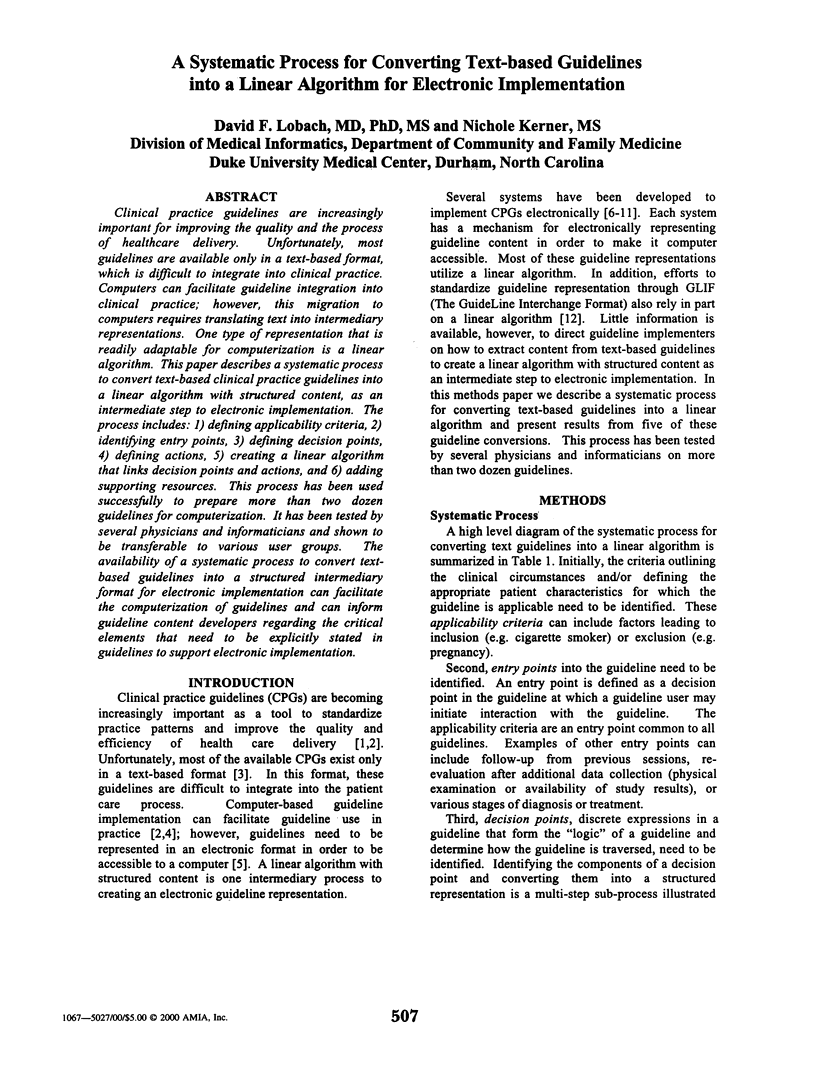
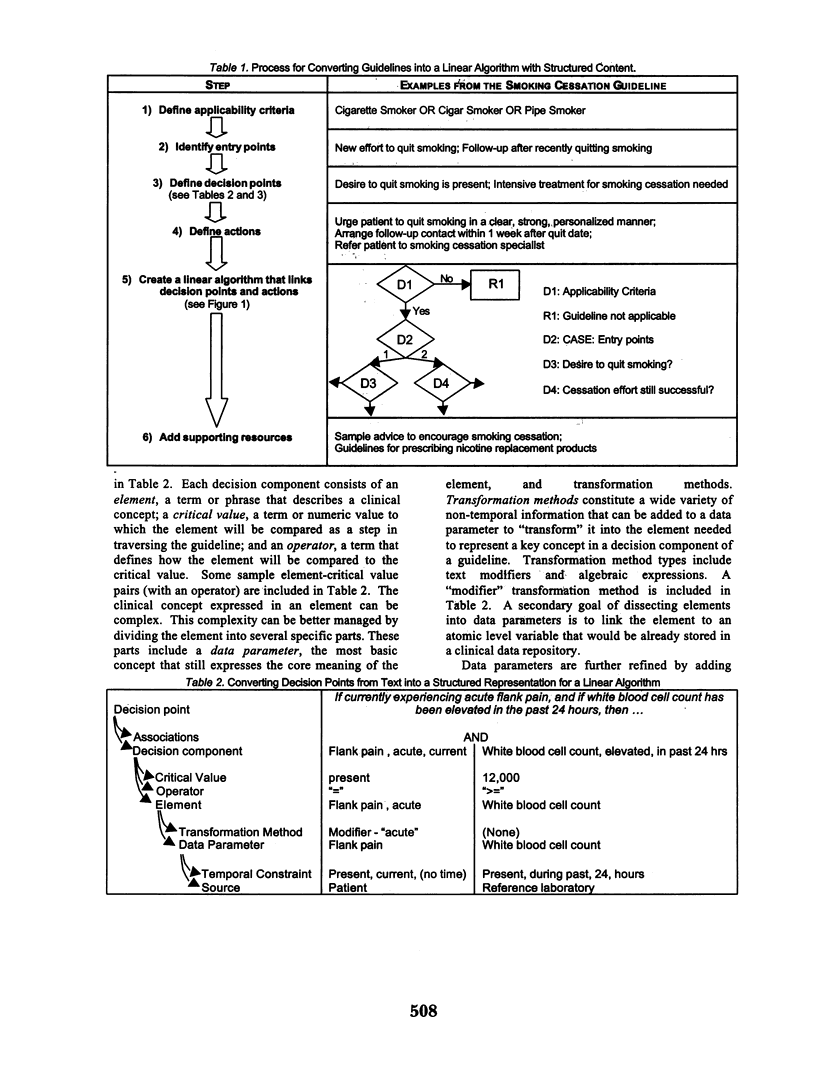
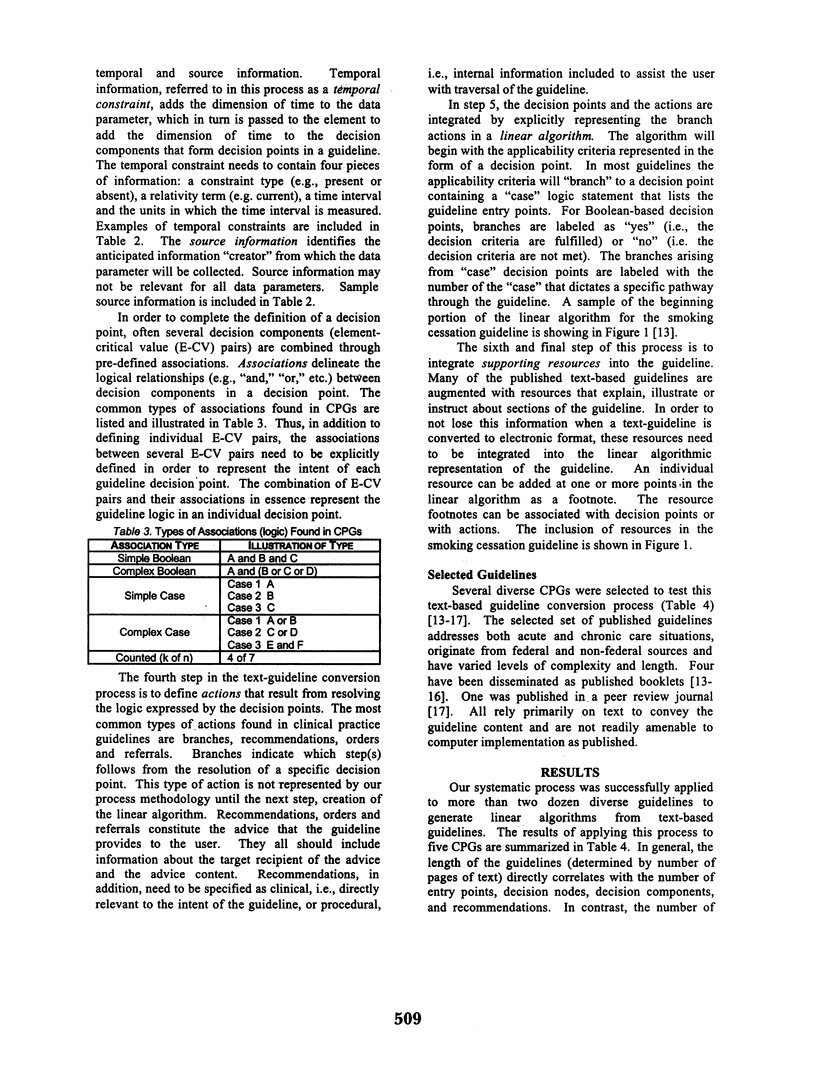
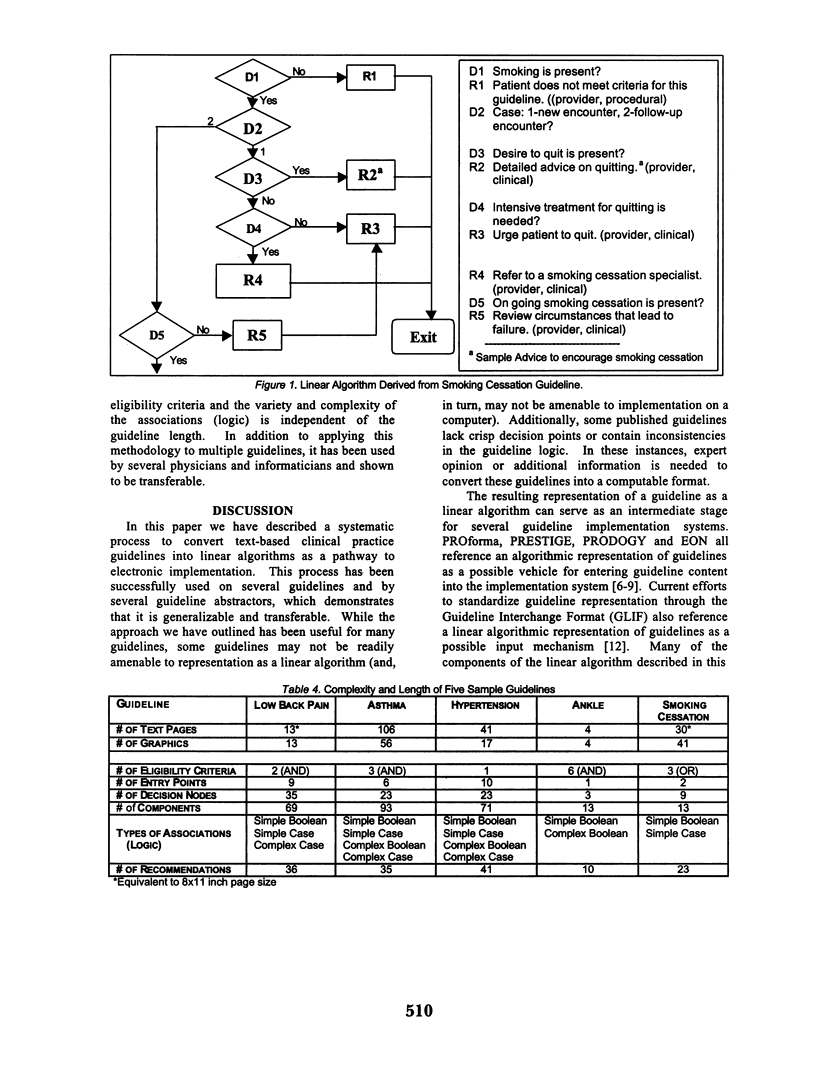
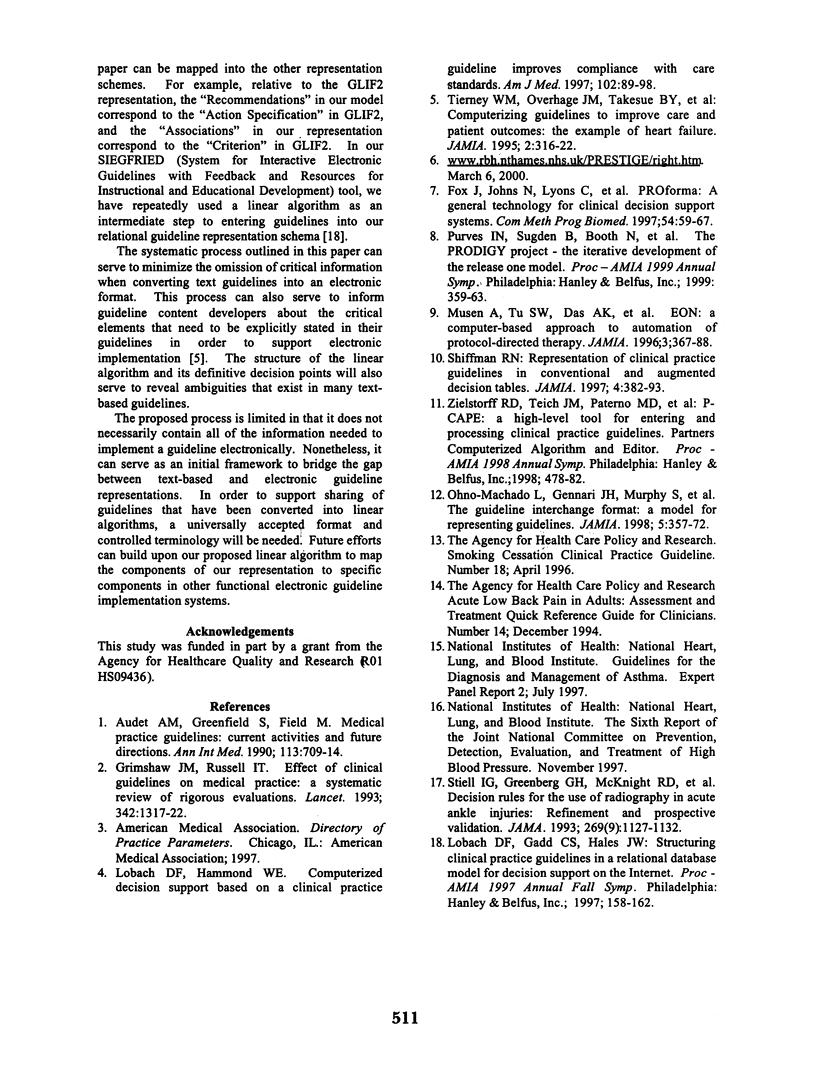
Selected References
These references are in PubMed. This may not be the complete list of references from this article.
- Audet A. M., Greenfield S., Field M. Medical practice guidelines: current activities and future directions. Ann Intern Med. 1990 Nov 1;113(9):709–714. doi: 10.7326/0003-4819-113-9-709. [DOI] [PubMed] [Google Scholar]
- Fox J., Johns N., Lyons C., Rahmanzadeh A., Thomson R., Wilson P. PROforma: a general technology for clinical decision support systems. Comput Methods Programs Biomed. 1997 Sep;54(1-2):59–67. doi: 10.1016/s0169-2607(97)00034-5. [DOI] [PubMed] [Google Scholar]
- Grimshaw J. M., Russell I. T. Effect of clinical guidelines on medical practice: a systematic review of rigorous evaluations. Lancet. 1993 Nov 27;342(8883):1317–1322. doi: 10.1016/0140-6736(93)92244-n. [DOI] [PubMed] [Google Scholar]
- Lobach D. F., Gadd C. S., Hales J. W. Structuring clinical practice guidelines in a relational database model for decision support on the Internet. Proc AMIA Annu Fall Symp. 1997:158–162. [PMC free article] [PubMed] [Google Scholar]
- Lobach D. F., Hammond W. E. Computerized decision support based on a clinical practice guideline improves compliance with care standards. Am J Med. 1997 Jan;102(1):89–98. doi: 10.1016/s0002-9343(96)00382-8. [DOI] [PubMed] [Google Scholar]
- Musen M. A., Tu S. W., Das A. K., Shahar Y. EON: a component-based approach to automation of protocol-directed therapy. J Am Med Inform Assoc. 1996 Nov-Dec;3(6):367–388. doi: 10.1136/jamia.1996.97084511. [DOI] [PMC free article] [PubMed] [Google Scholar]
- Ohno-Machado L., Gennari J. H., Murphy S. N., Jain N. L., Tu S. W., Oliver D. E., Pattison-Gordon E., Greenes R. A., Shortliffe E. H., Barnett G. O. The guideline interchange format: a model for representing guidelines. J Am Med Inform Assoc. 1998 Jul-Aug;5(4):357–372. doi: 10.1136/jamia.1998.0050357. [DOI] [PMC free article] [PubMed] [Google Scholar]
- Purves I. N., Sugden B., Booth N., Sowerby M. The PRODIGY project--the iterative development of the release one model. Proc AMIA Symp. 1999:359–363. [PMC free article] [PubMed] [Google Scholar]
- Shiffman R. N. Representation of clinical practice guidelines in conventional and augmented decision tables. J Am Med Inform Assoc. 1997 Sep-Oct;4(5):382–393. doi: 10.1136/jamia.1997.0040382. [DOI] [PMC free article] [PubMed] [Google Scholar]
- Stiell I. G., Greenberg G. H., McKnight R. D., Nair R. C., McDowell I., Reardon M., Stewart J. P., Maloney J. Decision rules for the use of radiography in acute ankle injuries. Refinement and prospective validation. JAMA. 1993 Mar 3;269(9):1127–1132. doi: 10.1001/jama.269.9.1127. [DOI] [PubMed] [Google Scholar]
- Tierney W. M., Overhage J. M., Takesue B. Y., Harris L. E., Murray M. D., Vargo D. L., McDonald C. J. Computerizing guidelines to improve care and patient outcomes: the example of heart failure. J Am Med Inform Assoc. 1995 Sep-Oct;2(5):316–322. doi: 10.1136/jamia.1995.96073834. [DOI] [PMC free article] [PubMed] [Google Scholar]
- Zielstorff R. D., Teich J. M., Paterno M. D., Segal M., Kuperman G. J., Hiltz F. L., Fox R. L. P-CAPE: a high-level tool for entering and processing clinical practice guidelines. Partners Computerized Algorithm and Editor. Proc AMIA Symp. 1998:478–482. [PMC free article] [PubMed] [Google Scholar]


